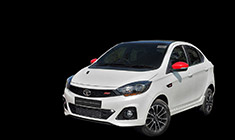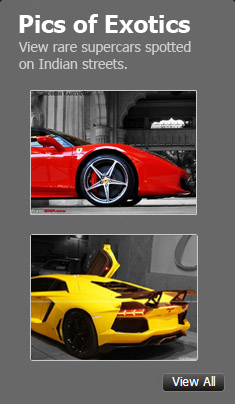News
How to avoid buying a troublesome car with niggles & problems
Can a defected car be spotted during PDI or is it just your luck and god's grace to get a car with no defects and problems?
BHPian PetrolHead2272 recently shared this with other enthusiasts.
When we talk about a few cars of indigenous brands, the first word that comes in my mind is niggles. Talking about cars from Tata and Mahindra, although they are wonderful and supremely comfortable, there are many niggles that come up.
Even for example, cars from MG. They too are getting a lot of issues, even in brand new cars that have a mere 1k - 5k on the odometer.
I have two questions:
1. Why do we associate brands like Tata, Mahindra and MG with niggles? Can they never be sorted out?
2. Let's say I am in the market for a car that has a history of niggles, taking example as the new Safari (I really love the new Safari). How do I avoid getting a particular one that has niggles? Can a defected car be spotted during PDI or is it just your luck and god's grace to get a car with no defects and problems?
The second question might be a bit lengthy. However, it is one question that keeps me awake at night.
Here's what BHPian paragsachania had to say on the matter:
You cannot check cars for niggles that carry such legacies as unspecified features that come complimentary. However, you can certainly avoid cars with niggles that are visible to you - badly fitted plastics, uneven panel gaps, rough edges but I guess that is about it. Anything beyond this is hiding in somewhere below the hood or under the car that will suddenly pop out one day and you know you are now sailing in the same ship as others. I have a friend who's brand new 20+ L rupee car had a check engine light on the day of delivery.
I can tell you that when it comes to such niggles, atrocious defence comes with statements like "The Customer Care Head of X brand handled the issue very professionally by arranging a tow truck in the middle of the night" but the same owner(s) doesn't want to give an iota of thought on why in the first place such an issue cropped up!! Instead they are happy to share this all over the social media with hashtags. And all this for a 2 million rupee car.
That famous excuse - New products from the stables of few manufactures will have issues and it is better to buy them when they release their next iteration seems like a common one these days, that we have been reading it since more than a decade for the same brands!
If you read niggles associated with certain models from few of these brands, you will realize that they are unusual too and that points out at one single attribute - Quality Control.
Second, focusing on the basics first and getting them right takes a back seat and instead buggy and iffy gizmos end-up ruining an otherwise good ownership experience.
To me, the best source for learning about such niggles are the official reviews (at least first hand early accounts if not long term), honest ownership reviews, and the experiences of your friends owning such cars and sharing their experiences and woes.
Here's what GTO had to say on the matter:
The broad ways to avoid troublesome cars:
- Avoid buying in the launch year of the product. The best of them have teething issues in the first year or two, including the mighty Innova. Generally, the later in the model year you buy, the better. The product is most sorted then. Both my luxury European sedans are from the 4th - 5th production years of their respective generations. I want to buy the new Thar introduced in 2020, but I won't buy it before 2022 or 2023.
- Look at the track record of the manufacturer. As an example, Maruti sells 50% of the cars in India, but you still don't see as many complaint threads on them, indicating that their cars are mostly reliable & trouble-free. In comparison, a still niche player like Skoda has a disproportionately large number of problematic threads, showing that their cars have issues small & big.
- Even from the same manufacturer, look at the track record of the product. Within the Tata portfolio, the Nexon & Hexa were very sorted, but the Harrier & Safari have way too many issues.
- Consider the parts & technologies onboard. Example, if you buy a dual-clutch AT, the odds of failure are very high. VAG, Hyundai-Kia, Ford etc. have all struggled with DCT reliability in India. Luxury car owners who go for the air suspension too might have breakdowns.
- Maintain your car in top shape, always getting the best labour & spare parts. Believe it or not, my 24-year old Jeep hasn't had a breakdown in 8 - 9 years (touchwood) because I send it to 2 top quality independent shops. My 8-year old 530d too hasn't had a breakdown yet (touches wood).
- Take care of your steed. Here are some best practices I've listed in another thread.
Here's what BHPian gkveda had to say on the matter:
Question 1: Can the manufacturer sort out niggles?
Let's understand the definition and cause of the niggles first. Niggles are design defects that arises due to tolerance limits defined by Manufacturers. Let us take an example and analyse. If we take any example of a simple nut and bolt assembly, if the nut thread pitch is 0.4mm as per design, the bolt thread pitch also HAS to be 0.4mm.
Both are manufactured at different sections of the factory. And in every batch, the settings has to be adjusted by the working personnel. Since the settings is done every time for a new batch, exact 0.4mm pitch cannot be achieved in practice. So, there will be tolerance limit for bolt and nut separately. A good quality manufacturer keep the tolerance limit as say + or - 5%. This means the thread pitch of bolt can vary from 0.398mm to 0.402mm.
Similarly, even for nut, the pitch varies from 0.398mm to 0.402mm.
Now, while mating both together, let us take best case scenario. A nut with 0.4mm gets mated with 0.4mm bolt. This is exact match and hence no play. This means no niggles.
Now, as a worst case scenario, a nut of 0.398mm pitch gets mated with 0.402mm pitch. This creates a play of 0.04mm. This has a possibility of niggle.
Some manufacturers take extra effort to mate low pitch (0.398mm) nut to low pitch (0.398mm) bolt and high pitch nut to high pitch bolt. This does not create a possible niggles.
This is the elementary principle of where niggles come from. It is applicable to every component in the products, be it car or any other mechanical or electrical or electronic components.
Some manufacturers take great care to have lowest tolerance limit while manufacturing. But this increases cost significantly exponentially. Hence high quality products costs very high. Other manufacturers compromise with higher tolerance limits and live with niggles. This yields low cost of manufacturing and some benefits is passed on to customers.
Coming back to your question, can the niggles be sorted out? They can be sorted out by manufacturers if there is a redefining of tolerance limit. This is a permanent solution. However, they will take the approach of replacement of nut or bolt (taking the example above). Let us assume nut is 0.402mm and bolt is 0.398mm. While replacing nut, there is a possibility that right nut (0.398mm) comes from the inventory. Then niggles are solved. For our bad luck, if another nut of 0.402mm is mated again, then niggles continue.
I have just explained the concept. But, in practice, the issue is more complex but principles are the same.
Now Question 2: It is sheer luck that you get a niggles free car if you are going with car that is known for niggles. There is no way that customers can check and get a niggles free car in a lot of 100s of car known for niggles.
Check out BHPian comments for more insights and information.
- Tags:
- Indian
- Member Content
- Issues
















